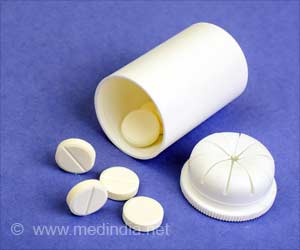Anti-diabetic drug semaglutide could effectively enhance symptoms, physical limitations, exercise function, and weight loss in patients with both HFpEF and obesity.

Semaglutide in HFpEF across obesity class and by body weight reduction: a prespecified analysis of the STEP-HFpEF trial
Go to source). Approximately half of patients with heart failure in the community have HFpEF. (2✔ ✔Trusted Source
Epidemiology of heart failure with preserved ejection fraction
Go to source) Most patients with HFpEF are overweight or obese, and growing evidence suggests that obesity and excess adiposity are not simply comorbidities, but may play a pivotal role in the development and progression of HFpEF (3✔ ✔Trusted Source
Obesity and heart failure with preserved ejection fraction: new insights and pathophysiological targets
Go to source).
Managing Debilitating Symptoms in Patients with Obesity-related HFpEF
Patients with obesity-related HFpEF have an especially high burden of debilitating symptoms (shortness of breath, exertional intolerance, swelling/edema) and physical limitations, which collectively result in a poor quality of life. Few treatment options are available, and there are no approved therapies specifically targeting the obesity phenotype of HFpEF.‘In individuals with obesity and heart failure with preserved ejection fraction (HFpEF), semaglutide 2.4 mg improved symptoms, physical limitations, exercise capacity, inflammation, weight loss, and reduced severe adverse events compared to the placebo. #weightloss #heartfailure #obesity #weightlossdrug’





Semaglutide is a potent glucagon-like-peptide-1 receptor agonist which has previously been shown to produce substantial weight loss in people with overweight and obesity. STEP-HFpEF was a randomized, double-blind, placebo-controlled trial conducted at 96 sites in 13 countries in Asia, Europe, North America and South America. The trial included patients with HFpEF (left ventricular ejection fraction ≥45%), body mass index (BMI) ≥30 kg/m2, heart failure symptoms and functional limitations (New York Heart Association functional class II–IV and Kansas City Cardiomyopathy Questionnaire Clinical Summary Score [KCCQ-CSS] <90 points). Participants were randomly assigned in a 1:1 ratio to once-weekly subcutaneous semaglutide 2.4 mg or placebo for 52 weeks. The trial had two primary endpoints: change from baseline to week 52 in 1) KCCQ-CSS, a gold standard measure of heart failure-related symptoms and physical limitations; and 2) body weight. Confirmatory secondary endpoints included change in 6-minute walk distance (6MWD – a validated measure of exercise function); a hierarchical composite endpoint of death, heart failure events and change in KCCQ-CSS and 6MWD; and change in C-reactive protein (CRP – a measure of inflammation).
The trial included 529 patients. The median age was 69 years and 56.1% were women. The median body weight and BMI at baseline were 105.1 kg and 37.0 kg/m2, respectively. At baseline, patients had a substantial degree of heart failure-related symptoms, physical limitations and poor exercise tolerance: 66.2% were NYHA class II and 33.8% were NYHA class III–IV; the median KCCQ-CSS was 58.9 points; and the median 6MWD was 320 meters.
Improving Symptoms and Weight Loss with Semaglutide in HFpEF Patients
The trial met both primary endpoints and all confirmatory secondary endpoints. The mean change in KCCQ-CSS from baseline to week 52 was 16.6 points with semaglutide versus 8.7 points with placebo (estimated treatment difference [ETD]: 7.8 points, 95% confidence interval [CI] 4.8 to 10.9; p<0.001). The mean change in body weight from baseline to week 52 was -13.3% with semaglutide versus -2.6% with placebo (ETD: -10.7%, 95% CI -11.9% to -9.4%; p<0.001).Regarding secondary endpoints, the mean change in 6MWD was 21.5 meters for semaglutide versus 1.2 meters for placebo (ETD: 20.3 meters, 95% CI 8.6 to 32.1; p<0.001). For the hierarchical composite endpoint, semaglutide produced more wins than placebo (win ratio 1.72, 95% CI 1.37 to 2.15; p<0.001). The mean change in CRP was -43.5% and -7.3% with semaglutide and placebo, respectively (estimated treatment ratio 0.61, 95% CI 0.51 to 0.72; p<0.001).
In terms of exploratory endpoints, the change in NTproBNP at 52 weeks was -20.9% and -5.3% for semaglutide versus placebo (estimated treatment ratio 0.84, 95% CI 0.71 to 0.98). One patient in the semaglutide group and 12 in the placebo group experienced an adjudicated event of heart failure hospitalization or urgent visit (hazard ratio 0.08, 95% CI 0.00 to 0.42). Serious adverse events were reported in 35 (13.3%) and 71 (26.7%) participants with semaglutide and placebo, respectively (p<0.001).
Advertisement
References:
- Semaglutide in HFpEF across obesity class and by body weight reduction: a prespecified analysis of the STEP-HFpEF trial - (https://www.nature.com/articles/s41591-023-02526-x)
- Epidemiology of heart failure with preserved ejection fraction - (https://www.nature.com/articles/nrcardio.2017.65)
- Obesity and heart failure with preserved ejection fraction: new insights and pathophysiological targets - (https://pubmed.ncbi.nlm.nih.gov/35880317/)















